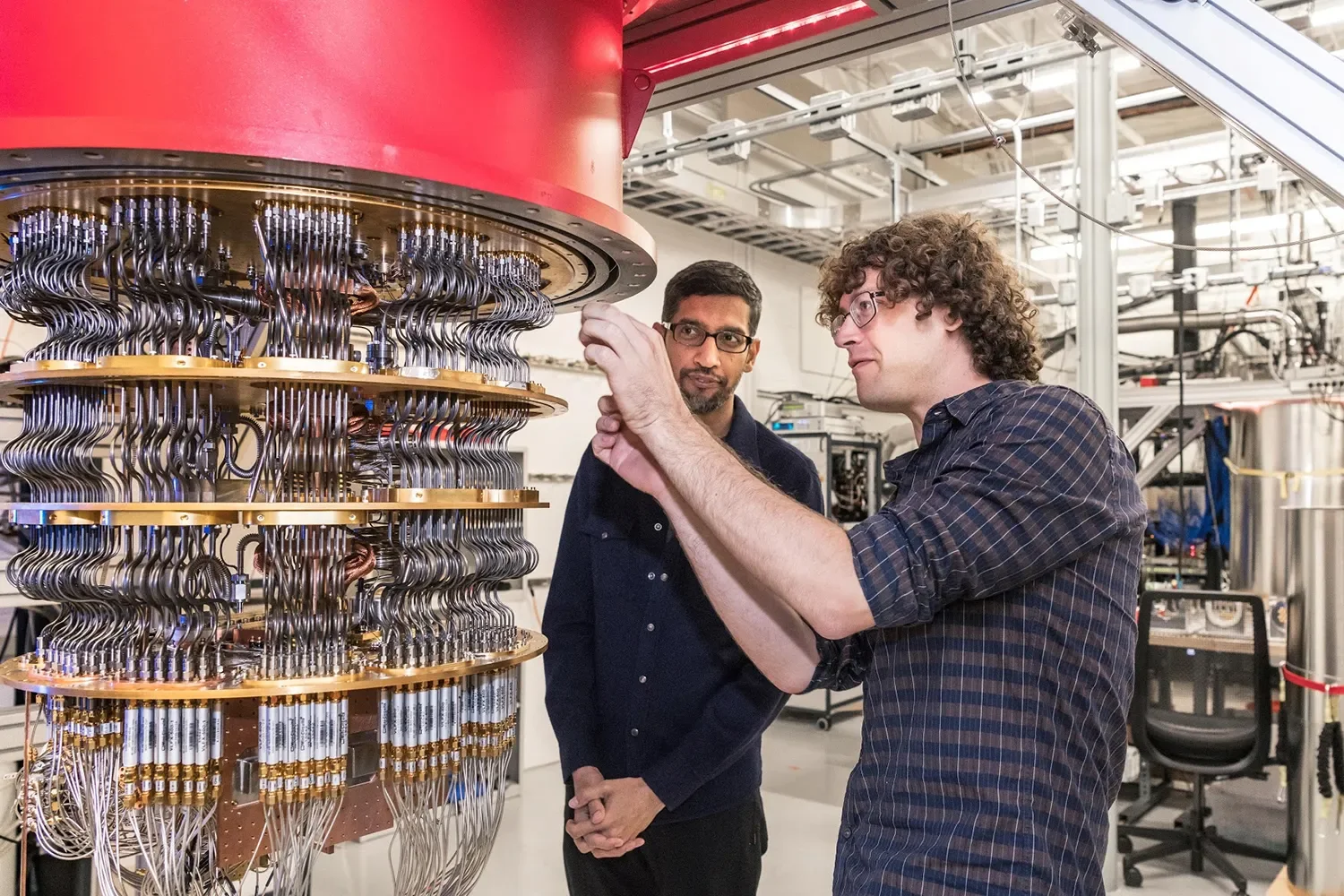After NIST: How PQC Lands in Market Plumbing
Daniel Sank makes adjustments to a Google quantum computer at Alphabet’s campus in Santa Barbara, as Sundar Pichai watches.
Credit: Google/Handout via Reuters
From FIPS 203/204/205 to hybrid TLS—Inevitabilities for exchanges, custodians and data vendors
Global markets are built on a web of public-key cryptography—TLS for market feeds and APIs, code signing for gateways, PKI for HSMs and smartcards. NIST’s finalised PQC standards—FIPS 203 (ML-KEM), FIPS 204 (ML-DSA/Dilithium) and FIPS 205 (SPHINCS+)—turn “prepare for quantum” from advice into a concrete engineering programme. For regulated firms, these FIPS become the north star for vendor requirements and audits.
The practical transition path is taking shape in standards bodies. The IETF has documented hybrid key exchange for TLS 1.3, combining classical ECDH with a PQ KEM (e.g., ML-KEM) so systems remain secure if either half fails. Major infrastructure providers are piloting hybrid TLS across CDNs and origin links, signalling that latency and interop can be managed. Meanwhile, ETSI and the UK’s NCSC emphasise crypto-agility—inventory, prioritise long-lived data, migrate in phases—an approach that maps cleanly onto exchange and clearinghouse change windows.
Where does this bite first? Market data distribution (TLS to thousands of clients), order entry APIs, custody interfaces, and code-signing chains for low-latency software. Expect vendors to ship dual-stack endpoints (classical + hybrid), with customers selecting policy per venue or session. For HSMs and key ceremonies, PQC introduces new artefacts—ML-DSA/SPHINCS+ signatures, KEM decapsulation logs—that Ops and Audit will need to learn.
Systemic risk cuts both ways. Done late, the shift invites a patchwork of quick fixes; done early, it reduces fragility by removing a single point of cryptographic failure. The BIS Innovation Hub’s Project Leap exists precisely to explore quantum-safe channels for payment messages between France and Germany, moving central-bank plumbing past theory and into measurable pilots. This is a classic “lower tail risk” investment—unexciting if it works, catastrophic if ignored.
Go-to-market for vendors serving exchanges and custodians should be operational: PQC-hardened SDKs with deterministic fallbacks, documented interop matrices, and change kits (runbooks, metrics, rollbacks) that fit weekly release trains. Ship crypto inventory tools (discover embedded RSA/ECC) and test harnesses that replay real traffic under hybrid handshakes. Buyers will ask for performance deltas (handshake time, packet sizes) and incident playbooks for mismatched endpoints—have them ready.
Regulators, for their part, want evidence trails: when did you enable PQ hybrids; how many sessions use them; how are keys rotated; what’s the plan for PQ signatures in code supply chains? Anchoring reports to NIST FIPS and IETF drafts shortens supervisory conversations.
The answer to “safer or more fragile?” is safer—if you start now. Markets that treat PQC like MiFID-grade plumbing changes will emerge with lower correlated cryptographic risk and cleaner upgrade stories. The laggards will be busy on Q-Day—and that’s the wrong day to start.
